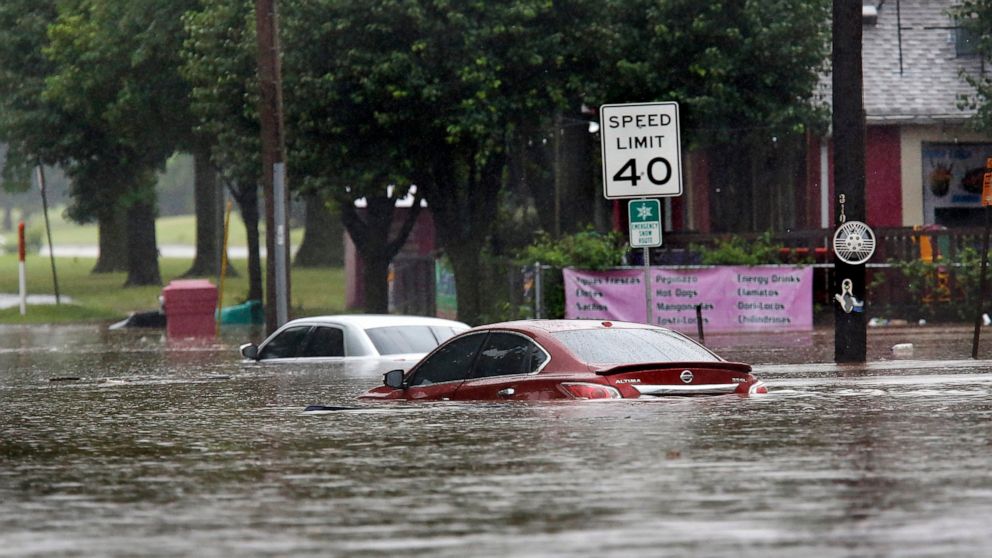Ethnic Media Services and California Black Media, in partnership with Listos California, are holding a series of statewide ethnic media briefings to keep California’s vulnerable populations informed about the severe storms forecasted across the state. The briefings will provide essential information and resources to ensure the safety of Californians and direct disaster survivors to find support. The speakers at the briefing include experts on the impact of the storms and what to expect in the near future. Governor Gavin Newsom has declared a state of emergency in 40 counties and requested federal aid to assist in the ongoing response to the storms. Diana Crofts-Pelayo, Assistant Director of Crisis Communication & Public Affairs at Cal OES, provided an update on the state’s comprehensive effort to protect California communities during these storms. She stressed the importance of being prepared, including signing up for local warning systems and putting together an emergency kit with essential items like food, water, and important documents.
David Lawrence, the Meteorologist and National Weather Service Liaison to Cal OES presented key weather points regarding an upcoming storm. The storm is expected to bring heavy rainfall to much of Northern and Central California on Tuesday, spreading into portions of Southern California by early Wednesday. In many areas of the state, an additional two to five inches of rainfall is expected, with some localized amounts potentially exceeding 10 inches. Unfortunately, the areas that have already experienced significant rainfall in the past couple of days are most likely to see this additional rainfall, which may result in additional flooding. In addition, strong winds with gusts of 40 to 60 miles per hour are expected in the lower elevations, with gusts potentially exceeding 80 miles per hour in the higher elevations. This may cause tree damage, falling trees, and power outages due to the wet soils. Rock and mudslides are also a possibility, as well as flash flooding. After the storm, there will be a brief break in the weather on Thursday and Friday, but it’s likely that above-normal precipitation will return to the state in mid and late-month. The details are currently unclear, but it’s important to be prepared for the possibility of additional periods of significant precipitation.
As Chief of the Office of Access and Functional Needs at Cal OES, Vance Taylor emphasizes the seriousness of the impending weather that will impact people throughout the state. While certain areas will be hit for the second, third, or fourth time, the impacts will be particularly deep in areas like Monterey, Merced, and Santa Cruz, which has resulted in an increase in the number of people who need to seek shelter. As the storms continue, this number is expected to rise. Although the government is doing what it can to help people, the widespread nature of the event means that there will be limits to the assistance it can provide. Therefore, it is essential for individuals to take steps to prepare themselves for safety before, during, and after disasters.
Taylor emphasizes the importance of preparedness for individuals with access and functional needs, including those with physical, developmental, or intellectual disabilities, transportation disadvantages, limited English proficiency, chronic injuries or illnesses, and those experiencing economic distress or homelessness. To prepare for loss of power, Taylor advises individuals to keep their equipment charged and to connect with programs like the Disability Disaster Access and Resources Program, which provides backup batteries, free evacuation services, hotel vouchers, food vouchers, and gas cards. It is also essential to activate friends, family, or care providers who can provide assistance during power outages.
For those who may need to evacuate, Taylor advises creating a list of people who can help, such as friends, family members, co-workers, and neighbors. By having a network of people to rely on, it is more likely that at least one of them will be available to help evacuate when the time comes. It is crucial to follow the guidance of local authorities and learn the different evacuation routes to get out of the community. Practice the evacuation plan as much as possible, and sign up for emergency alerts on Calalerts.org to receive reliable information about the storm and appropriate steps to take for health and safety.
In conclusion, Taylor urges everyone to prepare today so they can be ready for whatever tomorrow may bring. By taking small steps like preparing for loss of power, creating an evacuation plan, and signing up for emergency alerts, individuals can make all the difference in their safety during a disaster.
As the Deputy Secretary for Policy and Strategic Planning at the California Health and Human Services Agency, I would like to provide an update on our efforts to respond to the ongoing storms. Our agency has mobilized resources to support the 33 shelters across the state, including 27 congregate shelters and six non-congregate shelters. The Department of Social Services has been working with local and American Red Cross partners to provide support to 608 individuals across these sites. Additionally, 12 shelters are on standby and ready to be stood up as needed.
The Emergency Medical Services Authority has pre-positioned assets and staged ambulance strike teams to augment local capacity and ensure the EMS system can respond. The Department of Public Health is proactively engaging with healthcare partners in areas that are most likely to be impacted to maintain operations and have sufficient capacity. Our agency has prioritized our work across our 12 departments and five offices, working with our statewide partners to prepare the most vulnerable communities for the impact of these storms.
We have established a new task force called the Priority Populations Task Force, which focuses on four priority populations: people who are homeless or unsheltered, people who are older or medically vulnerable, people with disabilities, and people residing in congregate facilities. The task force has three main goals: to develop and disseminate information, to provide technical assistance to local and county government partners, and to evaluate resource requests and support the deployment of scarce resources.
We have several resources available for those impacted by the storms. Our website at www.chhss.ca.gov has a template personal emergency plan, which is especially important for those with access or functional needs. We also have prescription drug guides, mental health resources, social and healthcare services, and other resources available on our website.
It’s important for each of us to check in with our neighbors, connect with an older person in our life, and offer support to those who may need it. The Department of Social Services maintains a website with information about shelters and warming centers.
If you’re concerned about the well-being of a loved one residing in a long-term care facility, you can reach out to the Statewide Long-Term Care Ombudsman Crisis Line at 1-800-231-4024.
If you’re feeling stressed, anxious, or depressed, please reach out to someone for help. Our Cal helpline is available, and we have peer counselors who can provide non-judgmental support and guide you to additional resources. You can call the Hope line at 1-833-317-4673 or visit the Cal website.
Lastly, isolation can be difficult for our older loved ones and neighbors. We have established a Friendship Line for older adults, which is a free crisis intervention hotline and warm line for non-emergency emotional support. It’s available by calling 1-888-670-1360.
#EthnicMediaServices #CaliforniaBlackMedia #ListosCalifornia #severestorms #California #emergencyresponse #disasterpreparedness #GovernorGavinNewsom #stateofemergency #federalaid #accessibility #disabilities #transportationdisadvantages #limitedEnglishproficiency #CalOES #CaliforniaHealthandHumanServicesAgency #PriorityPopulationsTaskForce #evacuationplans #poweroutage #emergencyalerts #vulnerablecommunities











